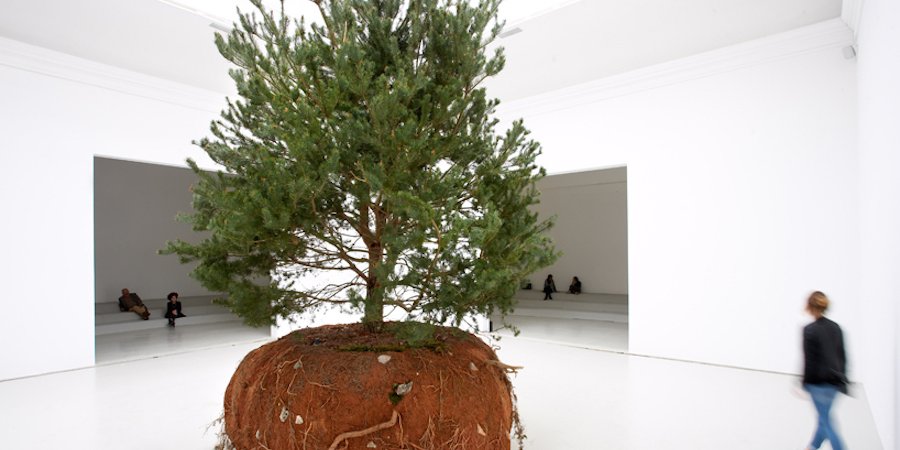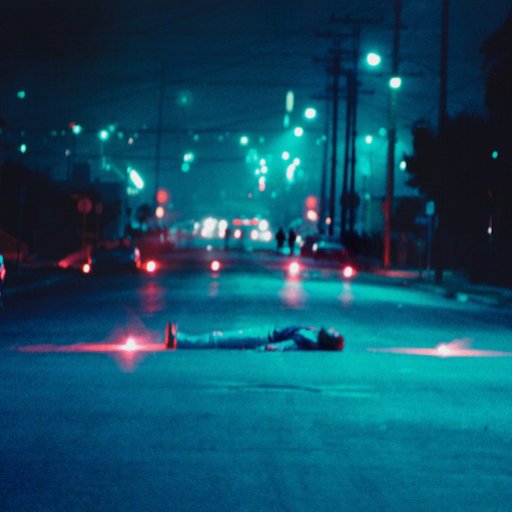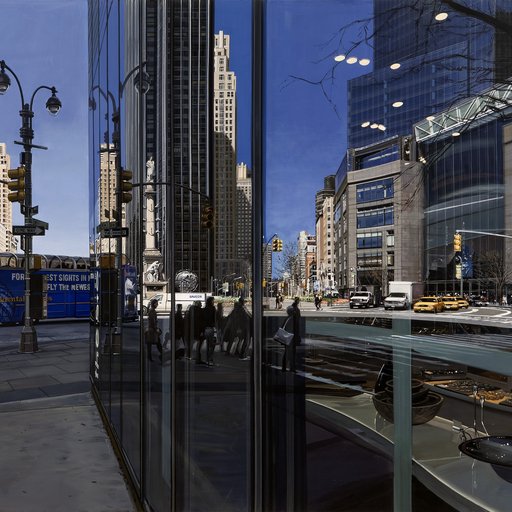In an unusually meditative Giardini, this year's Venice Biennale is characterized by a profusion of atmospheric tone poems and a dearth of pavilions that offer both visual and conceptual clarity. Here are three that stand out.
HITO STEYERL AT THE GERMAN PAVILION 
It’s hard to have more cool-factor these days than Berlin-based video artist and theoretical essayist Hito Steyerl, whose intellectually intricate artworks roll up our contemporary fears about life under a technocratic surveillance state, speculative new forms of tech-enabled creative autonomy, and freaky musings on capitalist networks into one big sci-fi-ish, video-game-addicted, underground-rave package. Her work is kind of like “Black Mirror,” only far more dense and discombobulating. Her Venice Biennale contribution at the German pavilion—which also features strong presentations by Olaf Nicolai, Tobias Zielony, and Jasmina Metwaly/Philip Rizk—finds her in excellent form with a 40-minute video that is manna for the paranoid.


Here are a few plot highlights: a man earns “photon points” (light is currency) by creating popular dance avatars through motion-capture technology; people are forced to move from country to country looking for work in a world characterized by poverty and military compounds; corporate drones shoot videos of uprisings, and people can dial in with their avatars to virtually participate; Deutsche Bank admits to using a drone to kill someone because they threatened an initiative at the bank’s “Sunshine Campus” to increase the speed of light in order to improve trading, saying, “We had to preempt the threat”; all real violence is experienced by its perpetrators as a video game.


Early in the video, text on the screen announces, “This is not a game you play. It will play you,” and the audience watches the work entirely immersed in a video-game context: the video is reached by walking down a flight of stairs that anyone would immediately recognize as derived from the 3-D texture mapping of first-person shooters, and the screening room itself features dozens of comfy lounge chairs spread out through a gridded room that immediately brings to mind “Tron.”
SARAH LUCAS AT THE BRITISH PAVILION 
The erstwhile Young British Artist Sarah Lucas has titled her Venice Biennale presentation “I Scream Daddio,” explaining that the daddy in question is the late sculptor Franz West . The sculpture that greets visitors as they enter the pavilion is an outrageously priapic homage to him. Painted a bright egg-yolk yellow (the thematic color of the pavilion itself, referring to Lucas’s frequent egg motif), this lounging figure is sculpted in the visual idiom of West’s outdoor sculptures (meaning it looks a bit turd-like). It leans back while a monumental phallus rises from its waist and testicular bits and bobs hang down to the floor.


Sex is obviously on the table here, as it so often is with Lucas, and that’s literally the case with the other sculptures of naked women from the hips down who are spread over wooden tables throughout the rest of the pavilion, confidently spread-eagled or submissively bent over, each penetrated by a single protruding cigarette. There are also bronze sculpture of animal-like creatures (a cat? an octopus?) whose limbs are strikingly penile and whose bodies are hung with bulbous ornaments that are either breasts, testes, or a combo thereof. 
Although it's not really an advancement of Lucas’s decades-spanning body of work, the pavilion acts as a pungent distillation of her interest in sex, power, gender, pleasure, violation, and empowerment.
CÉLESTE BOURSIER-MOUGENOT AT THE FRENCH PAVILION 
Techno-utopianism and ecological panic often come hand-in-hand in this Biennale, and Céleste Boursier-Mougenot’s smart, transporting installation at the French Pavilion was one of the theme’s more optimistic expressions. Inspired by the arboreal follies of Italian Mannerist gardens, the artist has brought three trees into the space and attached their naked clumps of roots to invisible wheels that allow them to slowly tour the space. Their movements are timed to the flow of sap through their systems and their process of light through photosynthesis. Audience members can lounge on a broken circle of white steps that ring the pavilion, and a low droning sound fills the building with an unusual form of music: the harmonization of the trees with the low-voltage current that propels their journeys.
Called “Revolutions,” the presentation imagines a world where technology provides plants with the autonomy of movement and even speech and transforms gardens into opportunities for new peer-to-peer engagement with nature—a splendidly beautiful conception of our environment that seems simultaneously ancient and plausible in the near future.



























